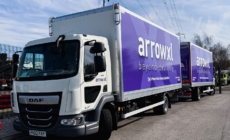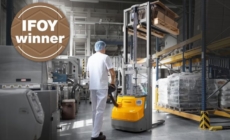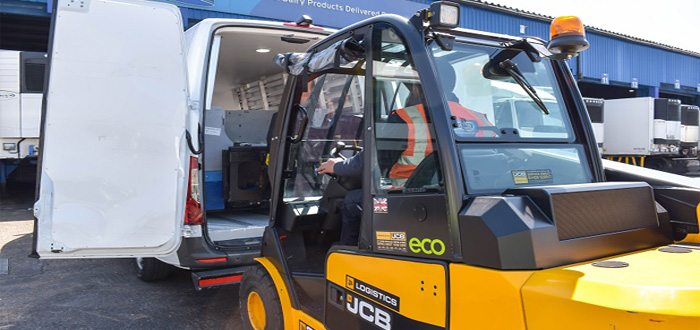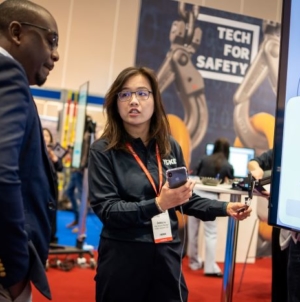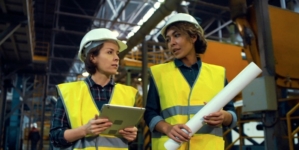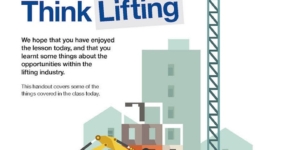-
ROSSLARE EUROPORT TARGETS HEALTH & SAFETY WITH CAMERA TELEMATICS PARTNERSHIP - 2 days ago
-
Landmark Study Reveals Wearable Robotics Significantly Boost Safety and Efficiency in Industrial Environments - July 24, 2024
-
Visku Tackle The Retail Seasonality Challenge One Pallet At A Time - July 22, 2024
-
KAMMAC AND BERGEN LOGISTICS STRENGTHEN FASHION & LIFESTYLE SERVICES IN THE UK - July 19, 2024
-
TENTBOX EXTENDS PARTNERSHIP WITH ARROWXL TO SUPPORT INCREASING DEMAND - July 17, 2024
-
The Perfume Shop improves customer journeys while driving profitability in partnership with Scurri - July 17, 2024
-
ZEROMISSION SECURES £2.3M ($3M) INVESTMENT TO ACCELERATE ELECTRIC FLEETS - July 16, 2024
-
BCMPA CELEBRATES SUCCESS OF 2024 CONFERENCE - July 15, 2024
-
Best of the Best: Jungheinrich Celebrates Triple International Award Win - July 12, 2024
-
GOPLASTICPALLETS.COM CALLS ON NEW CHANCELLOR RACHEL REEVES TO CONSIDER PLASTIC PACKAGING TAX REFORM - July 10, 2024
How greater forklift operator visibility can enhance warehouse safety
Safer by designThe warehouse sector works tirelessly to improve its accident record. Could an answer to a reduction in injuries be a unique forklift which offers unrivalled visibility compared to a conventional lift truck?
The Health and Safety at Work Act 1974 was introduced to force employers to take steps to protect the wellbeing of their employees and other people visiting their facility. Since the arrival of the legislation it has been every employer’s responsibility to carry out a full risk assessment of their operations and to then introduce appropriate safe working procedures.
However, despite the best efforts of the majority of companies operating in the logistics sector, warehouses and distribution centres remain among the places of work where an employee is most likely to be injured during the course of his or her daily routine.
Indeed, it is dispiriting to learn that, according to the Fork Lift Truck Association (FLTA), each year, 1300 people suffer life-changing injuries as a result of lift truck accidents, while figures released by the Health & Safety Executive (HSE) in October 2018 highlighted that over 3.9 million working days were lost in 2017/2018 due to non-fatal workplace transport injuries at an estimated cost to the UK economy of over £5.5 billion.
And, according to the HSE, forklift trucks are the most dangerous form of workplace transport – accounting for in the region of 25 per cent of all workplace transport injuries. The injuries sustained are rarely minor with debilitating and life-changing damage, such as amputations and complex fractures, commonplace.
Pedestrians are particularly at risk – accounting for 57% of those injured or killed in forklift accidents, the FLTA say. This not only highlights the need for better segregation between vehicles and pedestrians throughout the workplace but also demonstrates the critical importance of ensuring that the lift truck operator’s view from his or her driving position is optimised.
Peter Ward, CEO of the United Kingdom Warehousing Association (UKWA), the trade body representing the logistics sector whose members operate some 100 million square feet of warehouse and distribution centre space from more than 1300 locations across the UK and Ireland, says: “For all leading lift truck manufacturers safety is a key consideration and there is no doubt that the development in recent years of technology such as stability systems, pedestrian warning devices and other in-cab hazard alerts have all contributed to making the working day less dangerous for forklift operators as well as those on foot within the warehouse.However, when it comes to pedestrian safety, there is no escaping the fact that the fixed mast on a standard counterbalanced truck can, to some degree, restrict the operator’s forward visibility.”
Launched in 1997 and the winner of a number of design excellence awards, the JCB Teletruk was developed in part to overcome the problems that stem from the restricted operator view associated with the standard lift truck’s front-mounted vertical lift mast configuration.
The Teletruk differs from a conventional counterbalanced forklift in a number of ways but the most obvious is in its use of a telescopic boom mast in place of a front-mounted mast.
The Teletruk employs the same forward reach boom technology that is a feature of JCB’s larger world leading telehandlers, which are used throughout the construction and agricultural sectors – except the boom is fitted to a small chassis with a rear counterweight.
By employing a side-mounted boom the Teletruk provides a level of forward visibility unrivalled by any conventional lift truck.
“The fact that forward visibility is unobstructed by a traditional fixed mast, means that the Teletruk operator has 360 degree visibility of both the load and the working environment,” says Paul Murray, JCB’s Teletruk general manager.
And, because the side-mounted telescopic boom can extend forwards and upwards, the Teletruk is capable of moving palletised loads to and from places that had always been unreachable using a conventional vertical mast forklift.
This versatility enables the Teletruk to deliver further significant on site safety benefits by reducing the number of forklift movements that are required to load and unload trailers in and around the loading bay or yard area, as Paul Murray explains.
Paul Murray says: “Loading and unloading a trailer with counterbalanced forklift trucks means that trucks have to manoeuvre around around both sides of the vehicle.
“However, thanks to the Teletruk’s unique telescopic reach, curtain sided trailers can be accessed from only one side – which not only means less outdoor space is required but on site safety is enhanced significantly because lift trucks no longer need to travel around the blind side of the lorry.”
The world’s only telescopic lift truck, the JCB Teletruk is in operation at logistics hubs and distribution centres around the world. Diesel, LP Gas and electric-power source options are available and the Teletruk is offered with both two-and four-wheel drive versions. Hydrostatic drive technology now features across the Teletruk range to further boost productivity and optimise operational efficiency.
The hydrostatic driveline also enhances on site safety by allowing the user to pre-set the maximum speed at which the TLT can travel.
In addition, all machines in the JCB Teletruk range are fitted with Load Motion Control. This patented JCB innovation alerts the operator when reaching full lift or reach capacity with a simple green, amber, red light system and will not allow a load to be used outside of the load capabilities of the machine, aiding the prevention of forward tip.
Paul Murray adds: “Successful warehousing is all about maximising efficiency and productivity but those joint aims should never be achieved at the expense of safety. Safety and productivity are not mutually exclusive and the JCB Teletruk offers both safety and throughput benefits that companies simply cannot overlook.”
JCB will showcase models from the multi-award winning Teletruk range of telescopic lift trucks, including the newly launched JCB 30-19E – the first electric-powered machine in the Teletruk range – on its stand at IMHX 2019 (NEC, Birmingham, September 24-27).
ENDS






